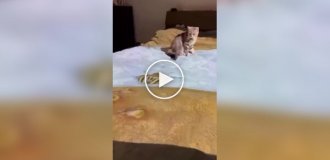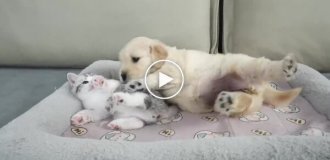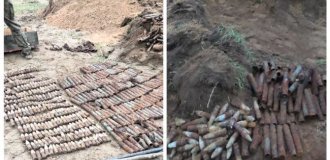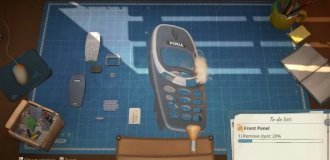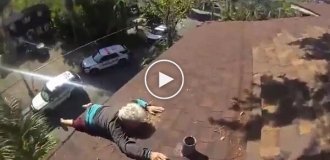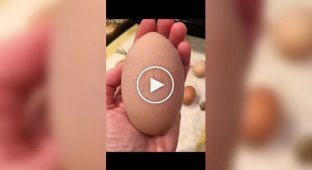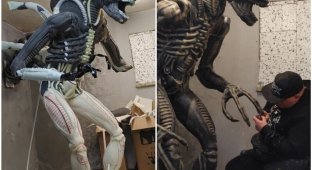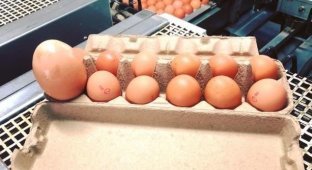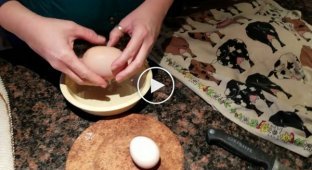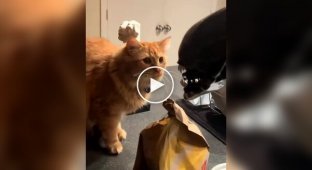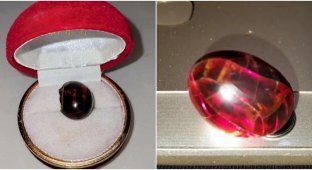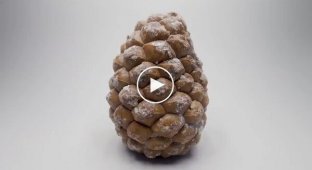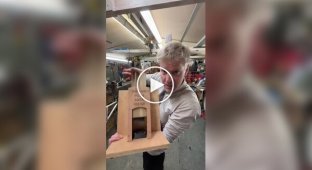30 types of xenomorphs from 'Alien': from classic to rare (33 photos)
The Alien franchise not only introduced the world to one of the most terrifying monsters in cinema, but also showcased the amazing variety of its forms. The caveat is that even the most dedicated fans of the franchise may not be aware of all the creature's variations. 
The Xenomorph design was first inspired by H.R. Giger's Necronom IV lithograph, but over the years the Xenomorphs have changed, evolved, and become more diverse in form.
Sit back and enjoy!
The Ovomorph is the starting point of the cycle 
The first stage of the xenomorph life cycle is the egg, or Ovomorph, first shown in Alien. The crew of the Nostromo, investigating a mysterious signal, discovers a vast field of strange organic capsules.
Each egg is a living organism, protecting the facehugger larva inside. As soon as someone approaches, the top of the Ovomorph opens up, and the creature inside quickly attacks the unsuspecting victim. This scene is repeated in almost all the films in the franchise, except Prometheus. Without the eggs, the entire life cycle of the xenomorph would be impossible, making them a key element in the survival of the species.
Facehugger - A nightmare on your face 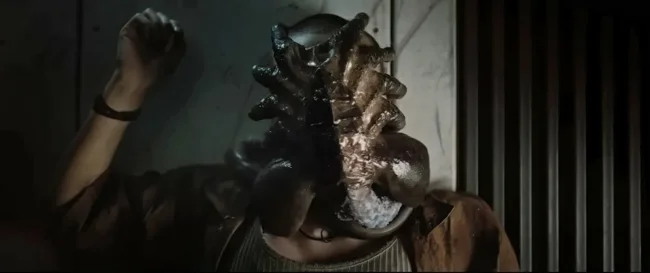
The Facehugger literally "grabs" its victim, attaching itself to their face and starting the next stage of the cycle. This creature, resembling a cross between a spider and a crab, hatches from an egg and quickly attacks its victim. Its purpose is to implant the embryo into the host, after which the Facehugger soon dies, having fulfilled its function.
These creatures display amazing agility and... determination. They can pursue their prey, instantly closing the distance thanks to sharp leaps. Facehuggers choose not only humans as hosts, but also other creatures, including animals, Predators and Space Jockeys, which leads to the creation of hybrid forms of xenomorphs.
Royal Facehugger - a special threat 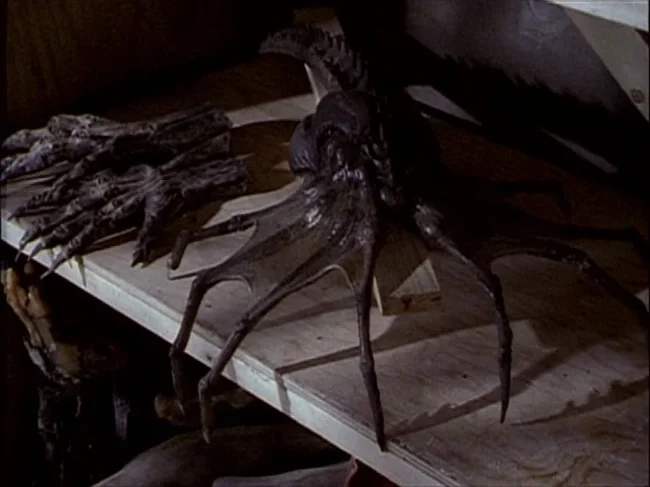
This rare variety of webbed facehugger first appeared in the director's cut of "Alien 3". The Royal Facehugger is larger than the standard one, has thick armor, and performs a special mission - the implantation of the Queen Xenomorph embryo. This specialization makes it a key link in the preservation and expansion of the population.
The unique threat of this creature lies not only in its strong protection, but also in the capabilities of its offspring. The original idea of u200bu200b"Alien 3" assumed that it would be the Royal Facehugger that would cause Ellen Ripley's infection.
Chestburster - the beginning of the horror 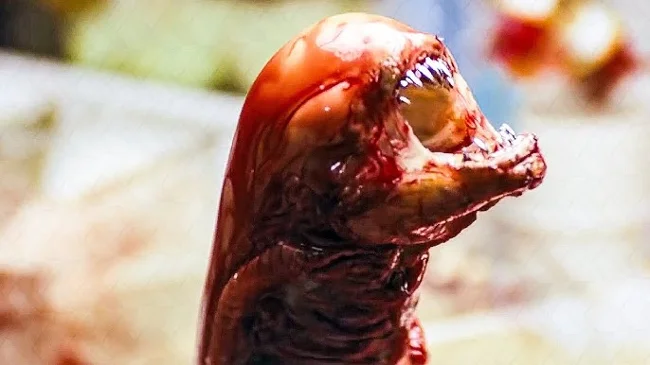
One of the most memorable moments in the history of cinema was the appearance of the chestburster in "Alien". This is the stage where the xenomorph embryo bursts out of its host, destroying the ribcage. Kane's horrific episode was the first demonstration of this phenomenon, shocking audiences in 1979. The Chestburster is relatively vulnerable, but its speed and survival instincts allow it to escape threats. This stage of the xenomorph's life cycle has been featured in every installment of the franchise, with the "hatching" moment each time being one of the most emotionally charged episodes.
Bloodburster - A New Threat 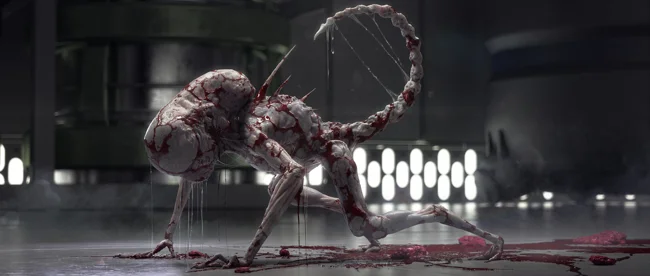
After the xenomorph-less Prometheus, Ridley Scott brought the franchise back to its roots in Alien: Covenant, introducing the Bloodburster, a new form of "hatching" xenomorph. Unlike the Chestburster, the Bloodburster appears after being infected with microscopic particles from egg sacs. The hatching process is also slightly different - the creature pierces the host with multiple needles and bursts out. This makes the infection process less noticeable, but much more effective.
Bloodbreakers resemble runners with their slender bodies, pale white skin, and aggressive behavior. They develop incredibly quickly, and their deadly instincts make them especially dangerous from the moment they are born.
The Drone is the most recognizable xenomorph 
The Drone is the young adult stage of the Xenomorph, first introduced in the original Alien. It is the type most often associated with the franchise, being the default type that comes to mind when thinking of Xenomorphs. It was the Drone that stalked the crew of the Nostromo, killing all but Ellen Ripley, and became the face of the entire franchise, including iconic video games like Alien: Isolation.
The signature translucent upper head with empty eye sockets makes the Drone even more terrifying. Its physiology is characterized by a bipedal stance (inherited from its human hosts), an elongated head, and a cylindrical skull. Drones stand approximately 2.5 meters tall. This variety of Xenomorph displays the species' signature feature of a second mouth inside the main one, which is used for attack.
Warrior - Tactical Threat 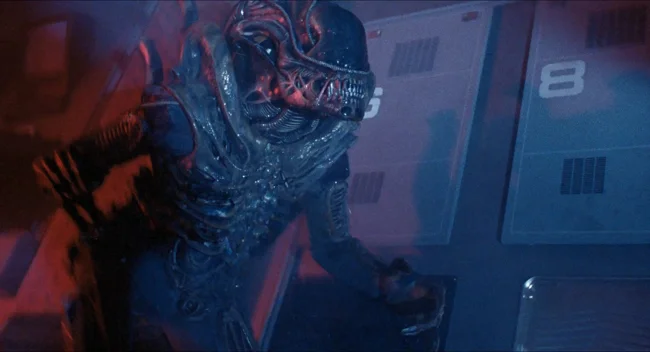
James Cameron's Aliens sequel introduced viewers to warriors, a stage of xenomorphs adapted for mass attacks. Unlike the single drone from the first film, these creatures act collectively, which makes them even more deadly.
Warriors are distinguished by a ribbed skull, increased speed and agility. These creatures are the backbone of hives and serve as the queen's protectors. In the film, they demonstrate amazing tactics, setting up ambushes that destroy colonial infantry in a matter of minutes.
Queen — leader of the hive 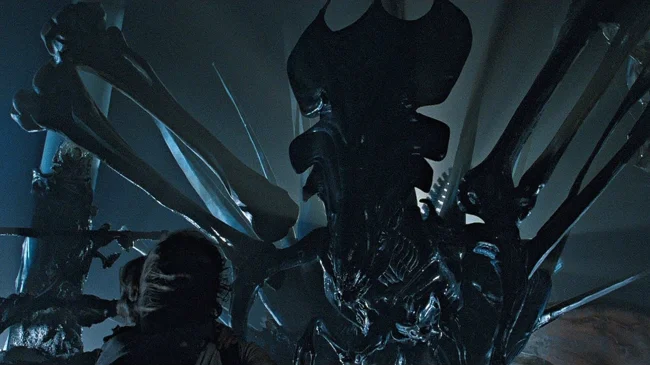
The Xenomorph Queen first appeared in the film "Aliens", becoming one of the most powerful and dangerous forms in the "Alien" universe. Its height reaches 4.5-6 meters, and its main role is the continuation of the species. The Queen lays eggs from which facehuggers are born, which makes it the center of survival of the entire species.
Despite its size, the Queen is incredibly mobile and can separate from the ovipositor to protect the hive. This intelligent and aggressive creature first showed itself as a strategic leader in the confrontation with Ripley. In Alien vs. Predator, the Queen was used for mass reproduction for the Predators to hunt. Her intelligence and role in the hive hierarchy make her one of the most unique figures in the franchise.
Runner - the first hybrid 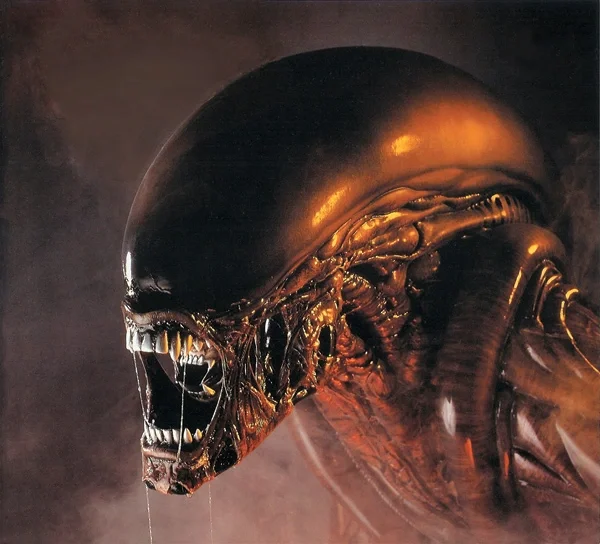
Alien 3 first showed how the xenomorph is affected by the physiology of its host. The Runner appeared after a facehugger infected a dog (or a bull - depending on the version - original and release). This type is distinguished by its quadrupedal gait, thin body and lack of spinal tubes, which gives it not only a unique appearance, but also incredible speed.
The Runner is extremely aggressive. In the film, it tirelessly pursues prisoners through the narrow corridors of the prison, demonstrating extraordinary agility. This design became a striking example of the evolution of xenomorphs depending on the host organism.
Newborn - a terrible experiment 
The Newborn is the first hybrid in the Alien series, introduced in the film Alien: Resurrection. It is the result of a genetic experiment on board the Auriga, where the queen was cloned from Ripley 8. The Newborn killed its "mother", believing the cloned Ripley to be its parent.
This form of the xenomorph is closer to humanoid than the original design. Its face resembles a human skull, and the lack of an inner jaw makes its appearance even more bizarre. Despite its strength, the hybrid was not liked by either audiences or critics, and after its death in Alien: Resurrection, it was not seen again in the series. Thanks for that!
Trilobite - Octopus-like ancestor 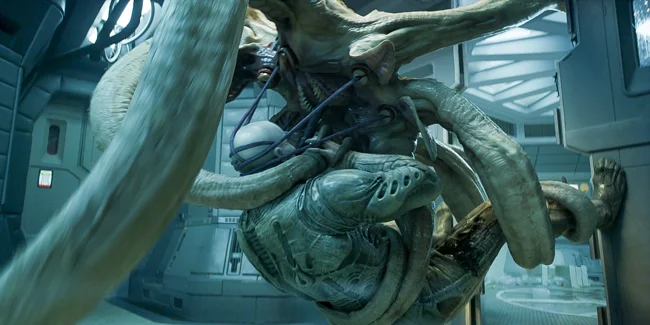
Trilobite first appears in Prometheus and exhibits behavior similar to the facehuggers from the original franchise. It is created after Charlie Holloway is infected with the "black goo" and given to Elizabeth Shaw. This creature, a massive octopus, grows rapidly after leaving its host, becoming a highly dangerous predator.
At the climax, the trilobite attacks the Engineer, acting as a facehugger, and infects it, creating the Deacon. This process hints at a close connection between the trilobite and classic xenomorphs, though its role in the species' evolution is not directly explained.
Deacon - Experimental Harbinger 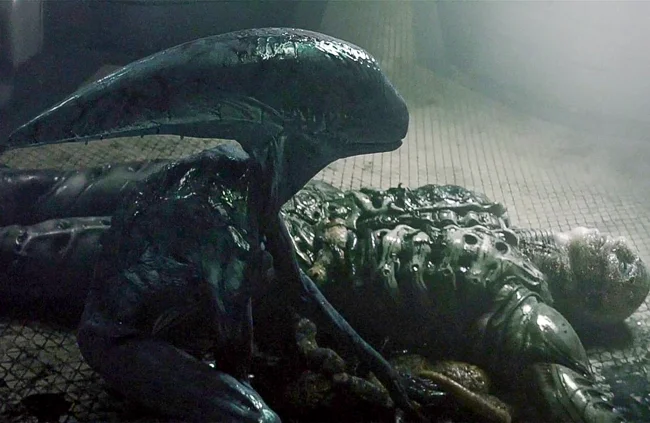
The Deacon, who appears at the end of Prometheus, is a transitional link between a trilobite and a classic xenomorph. Its appearance is reminiscent of familiar aliens, but with important differences. It has the elongated, pointed skull and inner jaw of a traditional xenomorph, but its biomechanical features are less pronounced.
Already human-sized at birth, the Deacon hints at the potential for further growth and evolution. Since it only appeared once, questions about its biology, behavior, and the possibility of acidic blood remain unanswered.
Neomorph - Aggressive Hybrid 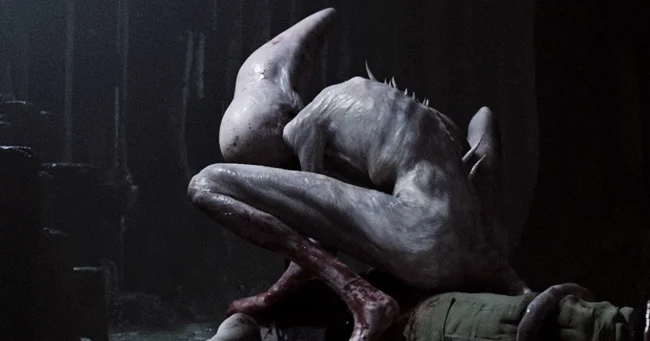
Neomorphs are the result of the "black goo" that affected the Planet 4 ecosystem in Alien: Covenant. These creatures look like distant relatives of the Xenomorphs, but have distinctive features. Their white, translucent skin and humanoid appearance give them a unique, creepy look.
Unlike the Xenomorphs, Neomorphs lack an internal jaw, and their blood is not acidic. Instead, they use sharp teeth and a spiked tail to attack. Their savage nature and relentless aggression make them no less deadly.
Protomorph (Praetomorph) - an artificially created xenomorph 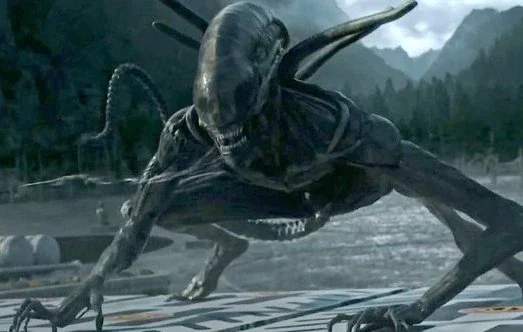
The Protomorphs introduced in Alien: Covenant are closer to the classic xenomorphs from the original franchise. These creatures were bred by the android David, who used the knowledge of the Engineers to create the perfect organism.
Protomorphs differ from their predecessors in their lack of biomechanical texture. They exhibit a more brutal, animalistic behavior, making them less calculating, but much more aggressive in combat. Rapidly growing and incredibly strong, Protomorphs inherited the characteristic translucent dome and inner jaw, which became the symbol of the entire species.
Grid - Scarred Xenomorph 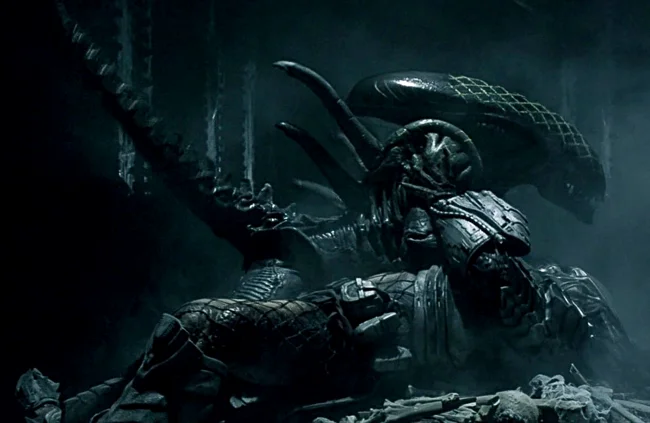
First appearing in Alien vs. Predator, Grid stands out from other Xenomorphs due to its unique appearance. Born in a Yautja pyramid, this drone became the alpha of the Xenomorphs found on Bouvet Island. It got its name from the distinctive markings on its skull and back, which were left after being attacked by the grid of Celtic, a young Predator. The nets, designed to strangle opponents, were embedded in Reticulated's skin, but his acidic blood dissolved them, allowing him to survive. Reticulated is notable not only for his scars, but also for his story arc, in which he goes head-to-head with a Predator named Scar.
Predalien is a xenomorph/Predator hybrid 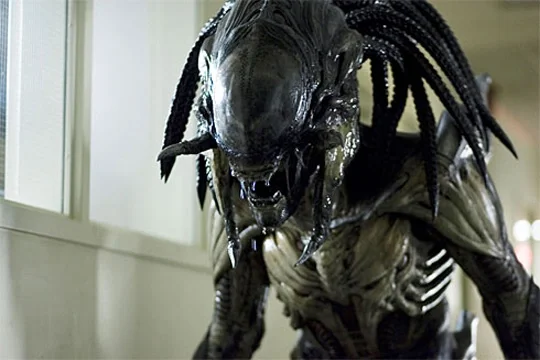
Predalien is the result of a Predator infestation with a Facehugger, featured in Alien vs. Predator: Requiem. The hybrid combines traits from both races, possessing the mandibles and "dreadlocks" of the Predator, but retains key xenomorph characteristics, including acidic blood and an inner jaw.
Xenomorph-Predator hybrids have appeared in comics and video games before, but their film debut was one of the most memorable moments of Requiem, despite the film's harsh criticism.
Tarkatan Xenomorph - Guest of Mortal Kombat 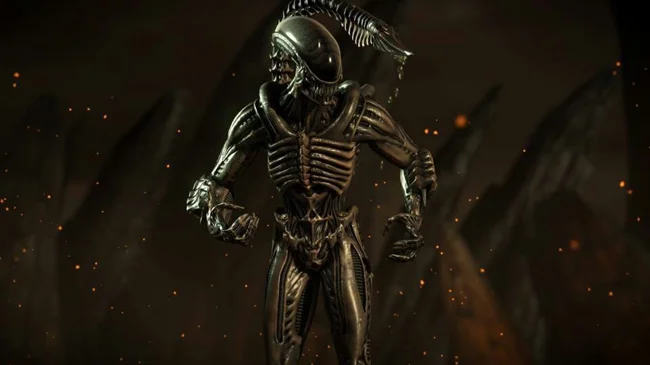
This xenomorph appeared in Mortal Kombat X as a result of the Tarkatan warrior Barak's infection. It was added as part of the DLC and combines elements of both races: a bulky body, sharp teeth, and retractable blades on the arms, similar to the Tarkatans.
The Tarkatan xenomorph retains many of the traits of a classic drone, but its physical strength has been greatly increased by the influence of Tarkatan DNA.
Praetorian - Elite Hive Guard 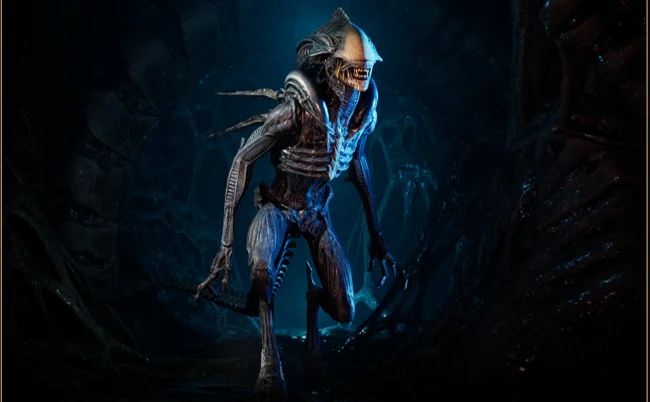
While not featured in the films, the Praetorians are known as the Xenomorph Royal Guard. They can be found in video games such as Alien vs. Predator or Aliens: Fireteam Elite, where they serve as protectors of the queen and the hive.
Praetorians are similar to warriors, but are larger and stronger. They are distinguished by a crest on their head, reminiscent of a royal one, which, according to the designers, emphasizes their high position in the hive. These creatures appear when the hive population reaches 300 individuals, and become not only defenders, but also commanders in the xenomorph armies.
Matriarch - an ancient queen 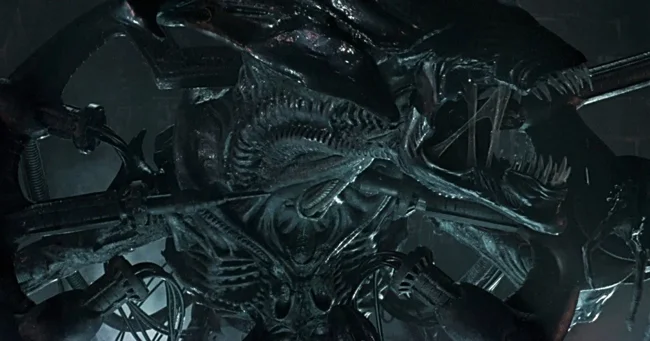
The Matriarch is the oldest xenomorph queen. Her age and battle scars indicate many battles. The Matriarch was first held captive by the Yautja to lay eggs for them to hunt, and then captured by the Weyland-Yutani corporation for their experiments.
Her ancient hide proved bulletproof, and her incredible resilience allowed her to escape, found her own hive, and continue the fight for the survival of her species.
Spitter Alien - Ranged Attacker 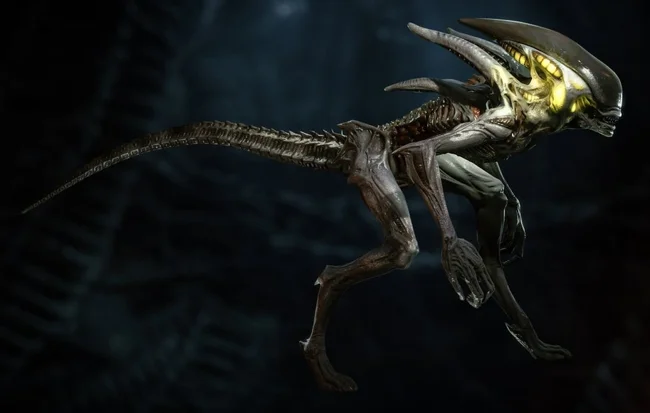
The Spitter Alien from Aliens: Colonial Marines and Aliens: Fireteam Elite stands out for its ability to spit acid at the enemy. These xenomorphs have a deacon-like head crest and acid sacs that provide the ranged attack.
Some Spitters have been exposed to toxic chemicals, becoming larger and stronger, and their acidic saliva is more destructive.
Crusher Alien - Armored Ram 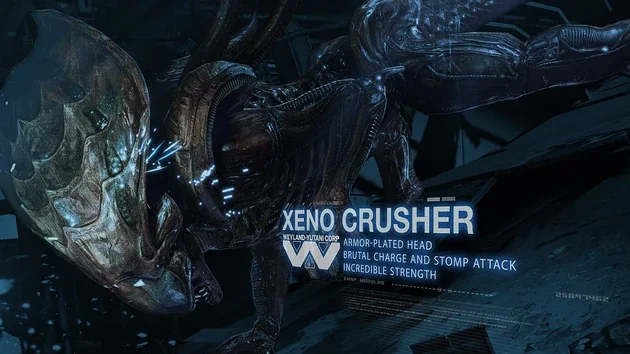
Featured in Aliens: Colonial Marines and Aliens: Fireteam Elite, the Crusher is one of the most powerful and armored forms of the xenomorph. With its thick armor on its head crest that is bulletproof, it can withstand heavy weapons and even collide with armored vehicles.
This form attacks its enemies like a battering ram, accelerating on all fours, making it similar to the runner from Alien 3. Some theories suggest that the Crusher evolves from larger host animals such as bulls due to its size and strength. Despite its power and importance to the hive, it only acts as "muscle" and is inferior to other species in intelligence.
Prowler Alien - Agile Jumper 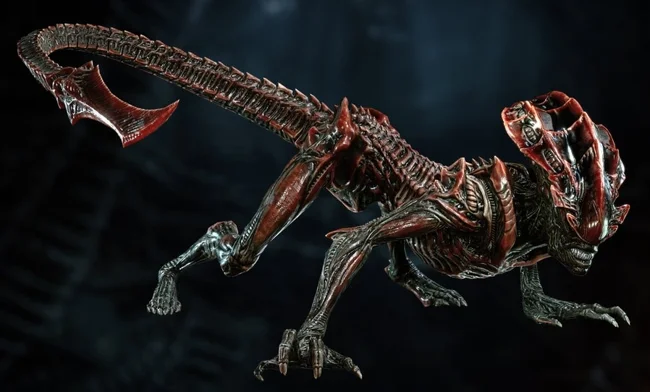
The Prowler, also known as the Plowman, appears in Aliens: Fireteam Elite and excels in agility.
The Prowler has unique red skin and a bladed tail that it uses offensively, similar to a scorpion. Its ridged crest and lack of dorsal tubes distinguish it from other Xenomorphs. While physically weaker than other species, it is known for being able to hold down a victim while other Xenomorphs deliver the finishing blow.
Necromorph - A Viral Infected Xenomorph 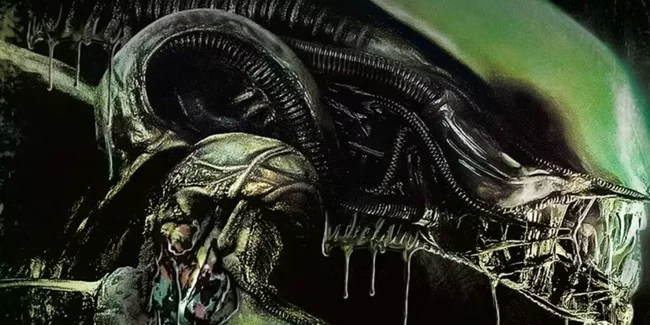
The Necromorph featured in the novel Alien: Prototype (2019) was the result of experiments by Dr. Gagnon to create a new species. However, necrosis in the host caused the Necromorph to become covered in blisters and sores that secreted a virus that infected its victims.
The Necromorph operates alone, hunting the crew of the Jericho 3 research facility. Its malformed and sickly appearance makes it one of the more grotesque variants of the Xenomorph, while its biological mission of spreading infection underscores the threat.
Space Jockey Xenomorph - A Giant Monster 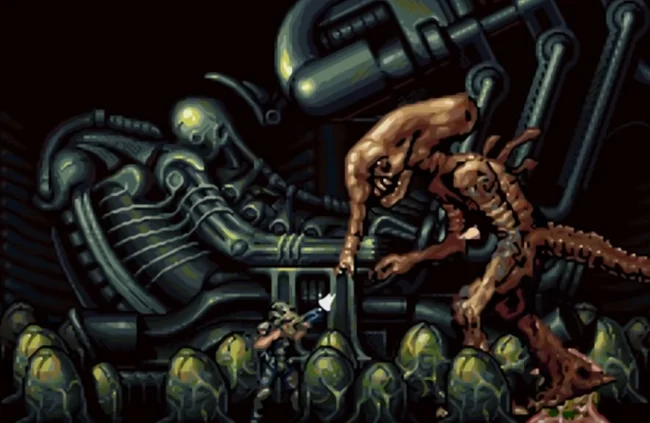
This Xenomorph first appeared in the Aliens: Apocalypse comic, and was inspired by the Space Jockey seen in the original Alien. It is speculated to have evolved from an infected Engineer, explaining its massive size and strength.
Unlike the standard Xenomorphs, this version is significantly larger and has an elephant-like trunk, highlighting its connection to the Space Jockey. Despite its interesting design, the character was removed from canon after the release of Prometheus
Black Goo Xenomorph - Albino and Telepathic 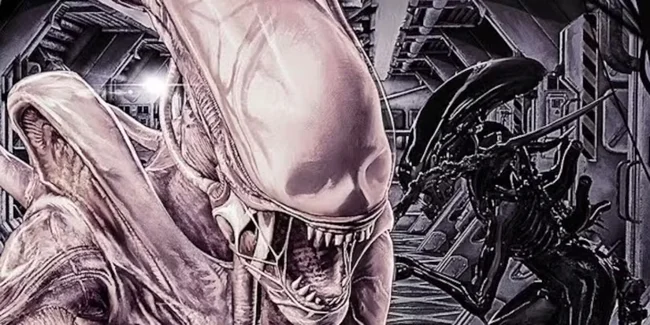
The novel "Aliens: Infiltrator" (2021) explores the effects of black goo on Xenomorphs. One of the results is the Xenomorph "Seven", who became an albino with telepathic abilities. He was able to control other specimens, demonstrating incredible intelligence.
Seven also has translucent skin, reminiscent of the original concept of the xenomorphs in Ridley Scott's film.
Anchorpoint Hybrid Xenomorph - An experimental mutation 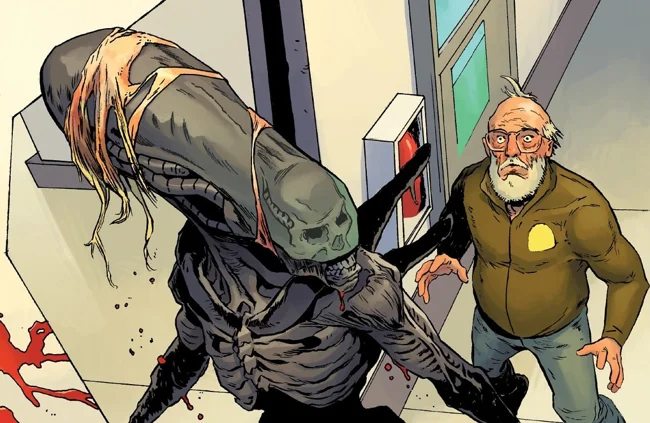
This variant first appeared in an unused script for Alien 3 written by William Gibson, and was later adapted into the Omnibus comics. The new hybrid reproduces through spores that infect others, making it especially dangerous.
The hybrid has a humanoid face, with a nose and eyes similar to the newborn from Alien: Resurrection. However, its strength is inferior to that of normal xenomorphs, which emphasizes the instability of the experimental form.
Aquatic Xenomorph - a predator of the deep 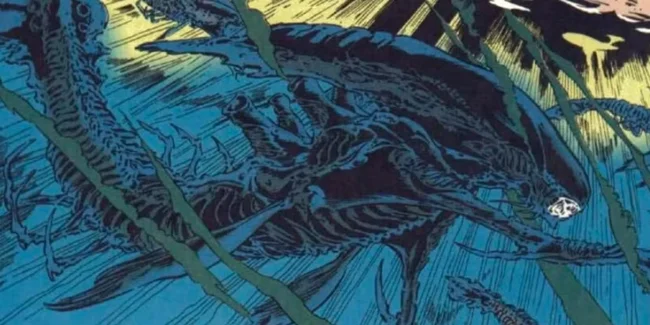
Aquatic Xenomorphs, also known as swimmers, first appeared in the Aliens: Colonial Marines comic book series. These creatures are fully adapted to life in an underwater environment, living on the planet Brackens, where large crustaceans could become their hosts.
Aquatic Xenomorphs are similar in size to Praetorians, but their body has features of marine fauna: the lower part resembles a fish tail, and the skin is colored blue. Their usual habitat is the depths of the ocean, but they also attack on the surface of the water, which makes them versatile hunters
Alpha (Alpha) - a unique hybrid of man and animal 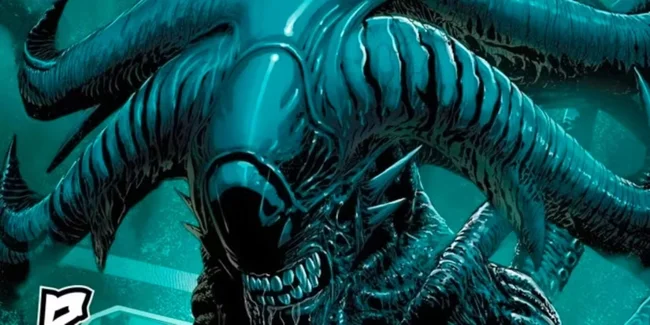
The Alpha Xenomorph was introduced in the comic Alien: Bloodlines and was the result of infecting a human and a Corcoran ibex (screenshot on the second slide). Its DNA combines features of both hosts, which is expressed in horns similar to a bull, and a body type reminiscent of a Praetorian.
Alpha possesses extraordinary physical strength and retains intelligence, allowing it to act strategically. Alpha's story culminates when he clashes with his former master Gabriel Cruz, resulting in the deaths of both. Despite its rarity, this xenomorph stands out as one of the most memorable hybrids in the franchise.
Irradiated Xenomorph - The Shining Killer 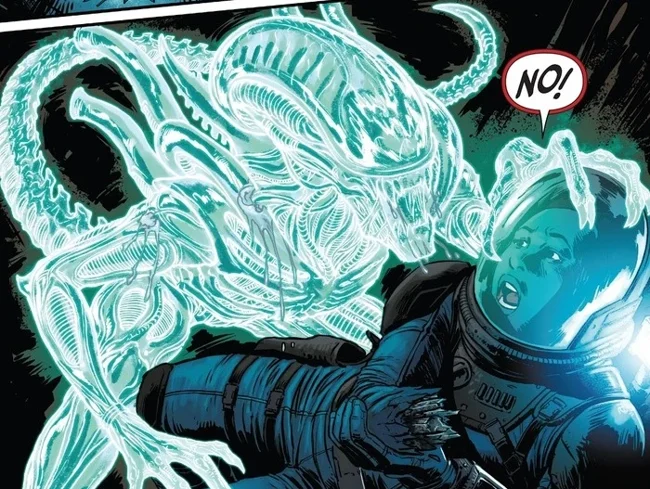
The Irradiated Xenomorph appeared in the Aliens: Aftermath comic, displaying bioluminescence, making it visible in the dark. While this removes its stealth capabilities, it does gain the advantage of a freezing effect: its liquid nitrogen-like body is capable of instantly freezing anything it touches.
This xenomorph is the sole survivor of the explosion of the atmospheric processor on LV-426, which caused it to mutate due to radiation.
Flying Xenomorph - A xenomorph with wings 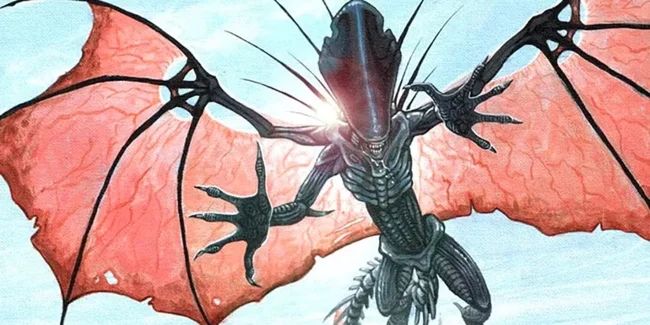
Flying xenomorphs are only featured in comics and games, such as Alien: Night Strike and Alien: Swarm. Their wings can be membranous, like those of bats, or insect-like, making them one of the most visually unusual variations.
The flying queen stands out in particular, with her enormous wings and impressive size highlighting her majesty and menace. It is curious and logical that flying xenomorphs usually live in nests, not hives.
Genetically modified xenomorphs in "Alien: Romulus" 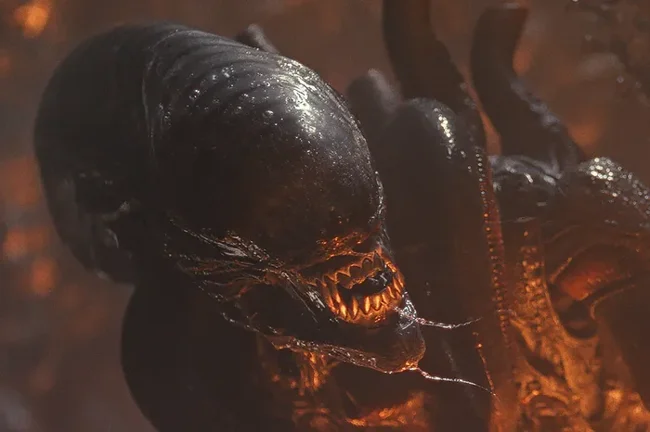
In addition to the Scion, the film "Alien: Romulus" shows other variations, including drones and warriors created from genetic material synthesized from the "Big Chap" from the wreckage of the "Nostromo" (in the fan community, Big Chap is almost an official name for the first xenomorph).
However, judging by the behavior in the film, one can assume that the "cloned" individuals are not as smart as those who appeared on LV-426.
The Offspring is a new horror incarnate 
Alien: Romulus introduces one of the most terrifying and aggressive types of xenomorphs to the canon. The film focuses on the drone and warrior variations created by Weyland-Yutani scientists on the Romulus and Remus stations. These creatures were bred from genetic material recovered from the wreckage of the Nostromo. However, the true horror is revealed at the end, when the audience is first introduced to the Offspring.
The Offspring is a human-xenomorph hybrid that is unlike any form seen before. Standing 3.5 meters tall, with a hard exoskeleton and a razor-sharp tail, the creature is visually a terrifying cross between a child and a monster.
The offspring embodies the central theme of Alien: the horror of violating the boundaries of the natural order and human nature. It highlights the consequences of genetic manipulation and raises new questions about how far Weyland-Yutani can go with its experiments.



